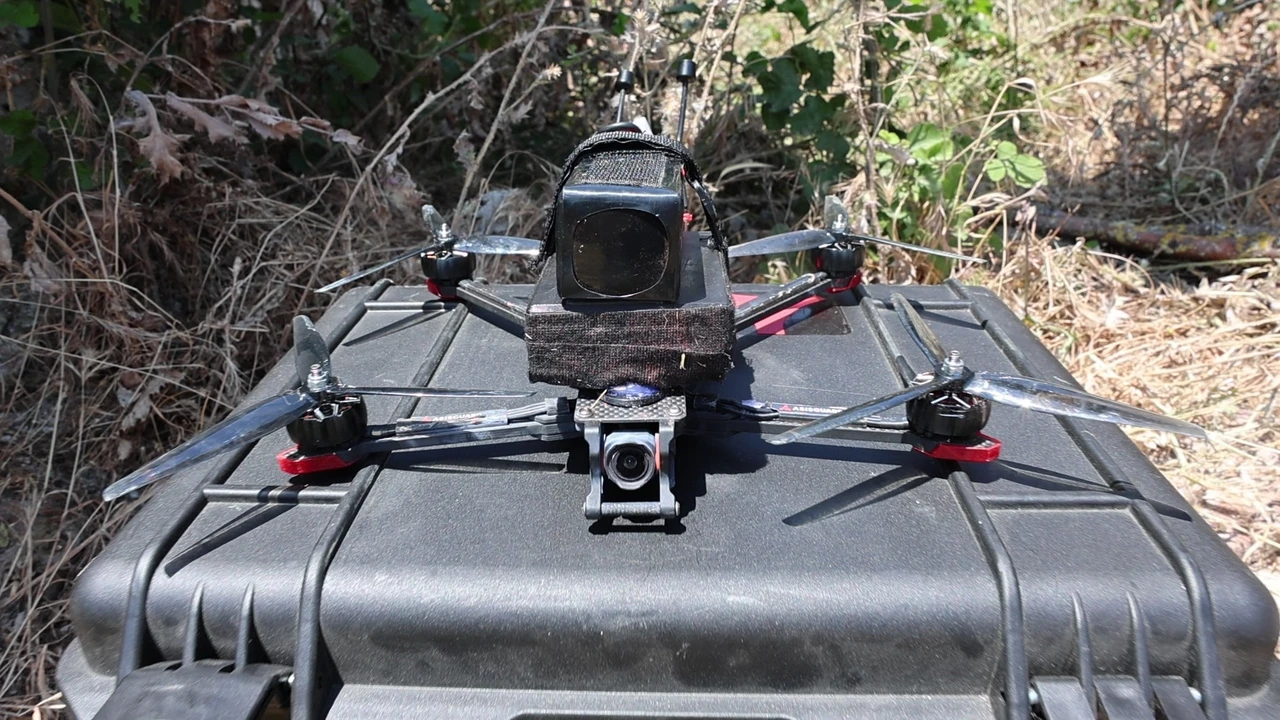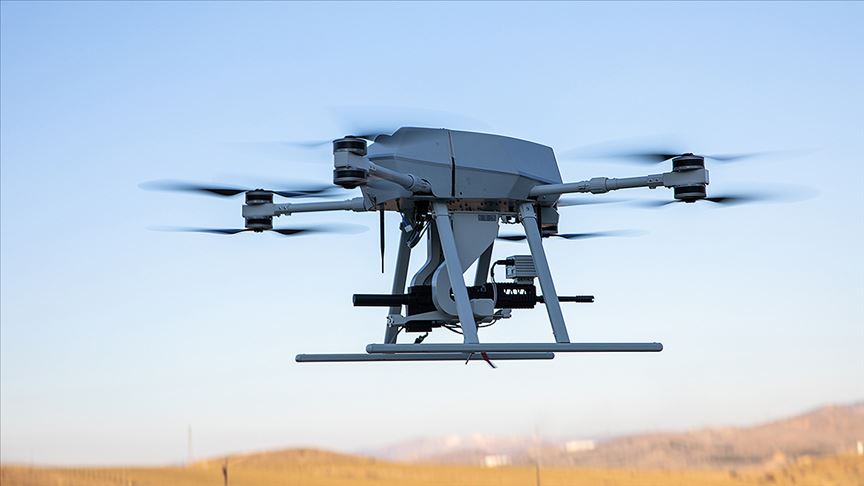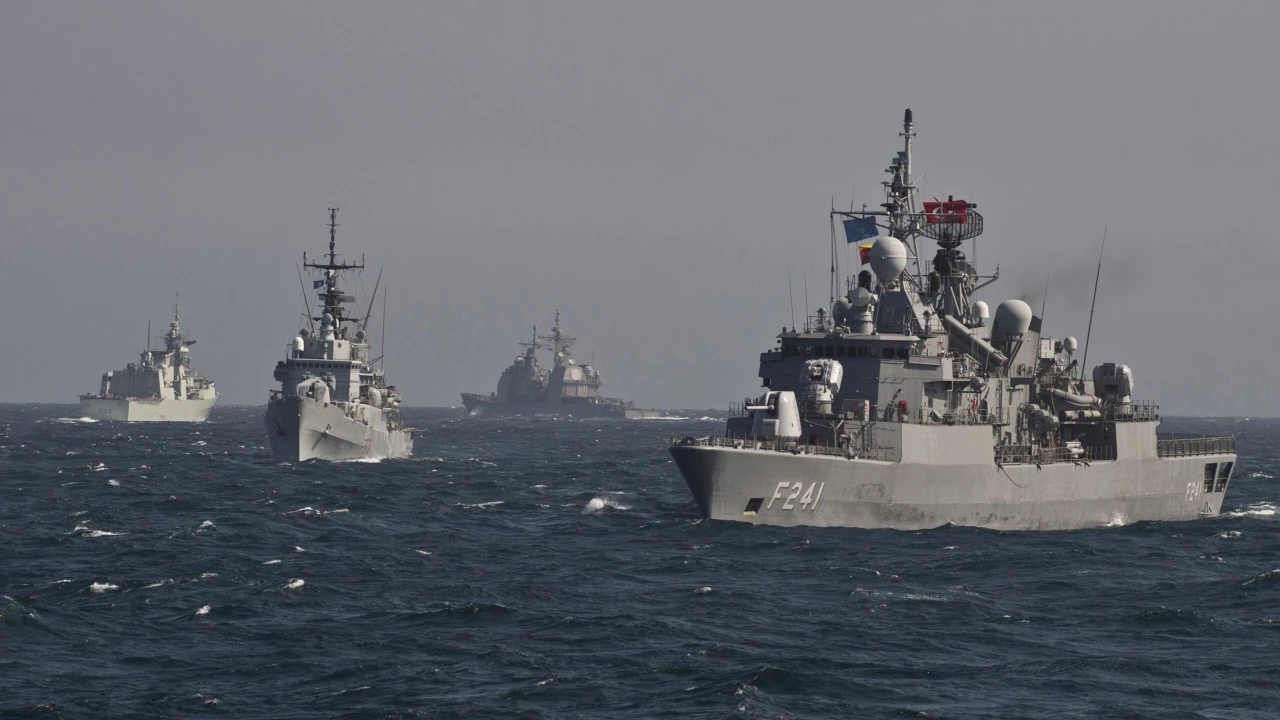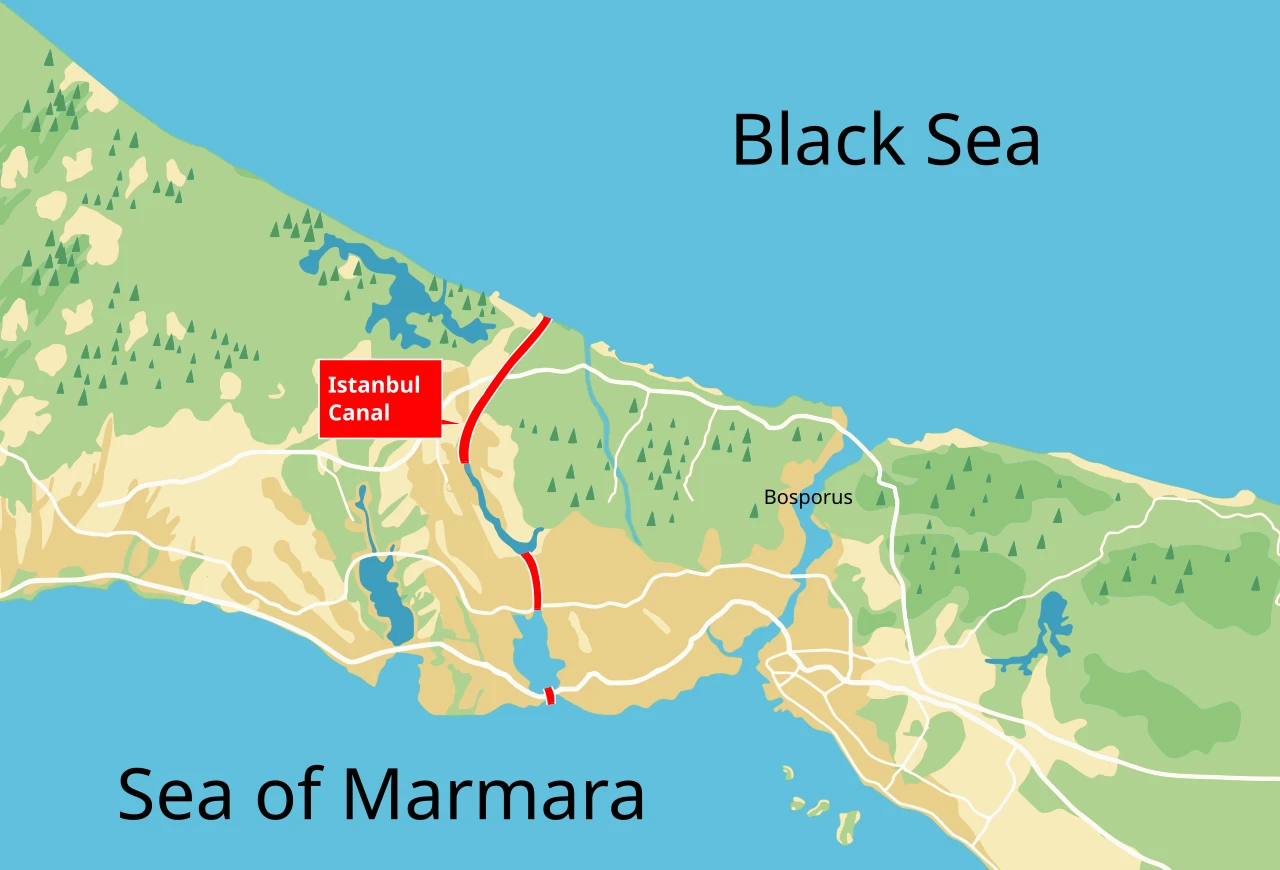Turkish defense industry adds next-gen Sagan FPV drone to fleet
 SAGAN FPV, in Ankara, Türkiye, 05 June, 2024 (AA Photo)
SAGAN FPV, in Ankara, Türkiye, 05 June, 2024 (AA Photo)
The Turkish defense industry has added a next-generation first-person view (FPV) drone, Sagan, to its fleet on Wednesday. The drone is inspired by the sharp-eyed soaring hawk.
Current needs and emerging threats are driving the search for new solutions in the defense industry. Drones, which have become both beneficial and a significant threat, are among the top agenda items for security forces and defense industry professionals developing technology in this field.
Collaboration within the Turkish defense industry has led to developing a new solution. Asisguard, which developed Türkiye’s first armed drone, Songar, has created the first FPV drone with a range of capabilities in partnership with KZ Mekatronik.
FPVs, where the pilot feels or sees the drone before their eyes, have recently become highly visible in defense and security for attack and interception purposes.
Asisguard’s new FPV drone, Sagan, emerged as a combination of nature and contemporary engineering. Sagan reflects Asisguard’s desire to push boundaries and passion for exploration in a modern form.
With its high durability and speed, the Sagan FPV drone delivers reliable performance in the toughest conditions. It is capable of conducting operations covertly, bypassing enemy defenses, with its silent flight capability and low radar signature.
The Sagan FPV drone provides security forces with superiority on the ground and in the air. Bringing the legendary features of the hawk to the modern battlefield, the Sagan FPV makes a difference in air-to-air and air-to-ground operations with its payload capacity of up to 1300 grams and a flight time of over 25 minutes without requiring setup.
Sagan’s high-resolution camera system offers users a broad perspective and significantly contributes to strategic reconnaissance and surveillance missions.
Asisguard and KZ Mekatronik’s collaboration has enhanced Sagan, transforming it into a kamikaze drone with explosives to neutralize threatening drones and perform surveillance and interception tasks in high-risk enclosed spaces like caves.
The final field tests conducted by the engineers from both companies have demonstrated the success of the developed capabilities.
Asisguard
Asisguard an Ankara-based Turkish defense industry company, develops rotary-wing armed/unarmed drone systems, electro-optical vision and border security systems, and military vehicle electronic systems to address the technological needs of Türkiye’s allies and friendly nations in the defense sector.
Leveraging its engineering infrastructure, Asisguard provides agile engineering solutions for the specialized and evolving design needs of its customers
Asisguard Songar

Songar, the first national armed drone system in the Turkish Armed Forces inventory, features a machine gun with firing stabilization. The stabilization system is protected by international patents and allows for single and burst firing modes during each flight. It autonomously performs its mission with multi-layered security until the operator permits fire. Designed to be ergonomic and user-friendly, Songar reduces the operator’s workload with functions such as return-to-home in case of connection loss, mission changes during flight and autonomous and manual control flight modes.
Easily portable and deployable, the Songar Armed Drone System provides close air support at the squad level and acts as a force multiplier.
Songar can perform various critical tasks, from detecting the target area to neutralize threats, assessing post-operation damage, and transmitting real-time video.
The Songar Armed Drone System can transmit video and telemetry data in real-time to the Ground Control Station (GCS). Throughout the flight, the position of Songar can be monitored on a moving map at the GCS, and flight telemetry data, images, and flight displays can be recorded and reviewed post-flight.
Songar includes an automatic gun stabilizer (OASIS), recoil damping, and the ability to tilt the barrel in the 0-60° vertical axis. It has a 10x magnification pilot camera, a gun camera, and a ground-control station (YKI). The machine-gun version can fire up to 200 5.56×45mm NATO rounds in an adjustable burst mode of 15 rounds. With a quickly changeable magazine, the drone can continue its mission seamlessly.
Capable of simultaneous missions with single or multiple drone systems, Songar performs aerial reconnaissance, target destruction, post-operative damage assessment, and real-time image transmission.
The Songar Togan variant, integrated with Sage Togan – a TUBITAK SAGE-developed 81 mm mortar – has a circular error probable (CEP) of 10 meters and a blast radius of 35 meters. Initially equipped with an automatic machine gun, Songar has evolved into various weapon systems and ammunition. In March 2022, a Songar drone with a laser-guided mini-missile system was tested. It can fire six mini-missiles, each 170 mm long and 40 mm in diameter, developed by Troy Technology.
These missiles are effective up to 2 kilometers (1.2 miles) and are designed for cross-border and residential area operations. The anti-personnel warhead operates within a 12-meter radius, while the armor-piercing warhead meets Stanag 4569 Level 2 standards and can destroy fixed targets like unarmored and lightly armored vehicles, buildings, and small structures.
Loitering Ammunition: A dynamic air weapon system
Loitering ammunition, also known as suicide drones or kamikaze drones, is an air weapon system that navigates around the target area for a period and attacks only when a target is identified. These ammunition systems offer faster response times against hidden or clandestine targets near high-value platforms with no close placement to the target area, allowing for more selective targeting as attacks can be easily aborted.
Loitering ammunition is considered alongside cruise missiles and armed unmanned aerial vehicles (UAVs), sharing similar characteristics with both. It differs from cruise missiles because it is designed to loiter around the target area for a relatively extended period and from UAVs because it is intended to be expended in a single attack and possesses an embedded warhead. Hence, it can also be considered a non-traditional stand-off weapon.
These weapons first emerged in the 1980s for the Suppression of Enemy Air Defenses (SEAD) role against surface-to-air missiles (SAMs) and were deployed for SEAD roles in various military forces in the 1990s.
Starting from the 2000s, loitering ammunition systems were developed for additional roles ranging from relatively long-range strikes and fire support to compact tactical systems with very short ranges.



